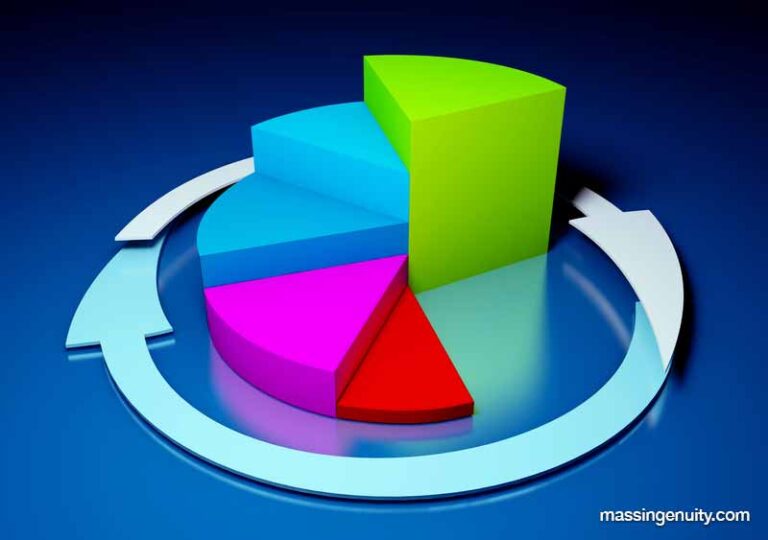Some people mistake enterprise resource planning (ERP) as being the same as enterprise performance management (EPM). However, both these business tools are distinct and encompass a set of different functions that are equally essential to business organizations. To begin with, enterprise resource planning involves the automation of business processes and the collection of pertinent data to operations. On the flipside, enterprise performance management entails integrating data from multiple sources including ERP systems to obtain business intelligence that is presented in a single user interface.
Enterprise resource planning systems deliver some reporting capabilities for an organization’s day-to-day operations. This may include scheduling and tracking supply chains, sales, marketing, and even human resources. Alternatively, enterprise performance management applications focus on pulling external data from other business software to gain actionable insights which can be useful to an organization. This includes strategic planning, measuring quality objectives, and effective data analytics.
Generally, ERPs lack the capability to facilitate data visualization or even functional reporting. Instead, their strength lies in financial reporting, scheduling operations, and inventory management. They typically don’t provide much reporting of data analytics and strategic planning, and this is where EPMs come into play. Enterprise performance software sets to work by supporting and helping businesses to act on the data generated in enterprise resource planning. Ideally, ERPs are designed to “work in” a business’s operations, while EPMs are designed to “work on” a business, so to speak. As a company, it is critical to execute day-to-day core operations to be profitable. Similarly, planning for the future and setting business goals is equally necessary for a company to remain competitive and stand out from the rest of the pack.
The unique capabilities of an EPM system like Results Software are the only means of effectively managing this side of business operations.
What are the constraints of using enterprise resource planning software?
The right enterprise resource planning software for your organization tends to be dependent on your unique needs and preferences. For instance, if you determine your biggest deficiency is scheduling operations, you will want an ERP that is strong in scheduling capabilities.

Yet, very often, when an ERP is good in serving one function, it might not be strong in others. Some of the things that virtually all ERPs can’t deliver include the capabilities to manage strategic initiatives, strong data analytics, and comprehensive business reporting.
Without a data visualization tool, you would ordinarily have to allocate more resources for your IT team to extract meaningful insights from the data generated by an ERP. Also, it would be time-intensive to present such data in a customized report.
Therefore, enterprise resource planning applications are only good for working in the business, especially in the context of data collection. Nevertheless, you will never find one which can handle enterprise performance management effectively. Besides the ERP system, you would have to invest in separate software for tracking your business goals, strategic initiatives, or even individual performance. Worse still, it becomes nearly impossible to track all these metrics since you will be using entirely separate systems. This equates to mining data from multiple sources and then having to compile the information gathered in a comprehensible report.
How does enterprise performance management software fill the gaps in strategic planning?
Good enterprise performance management software can fill this missing gap by tracking strategic initiatives assigned to different employees and then holding them accountable. More importantly, a good enterprise performance management application can tie in strategic initiatives with metrics. This way, you will be measuring performance and will also have the capability to clearly demonstrate whether or not your actions are bearing any real consequences. With a good data visualization tool, you will be able to see if you are making any progress with your strategic measures and driving continuous improvement.
Enterprise resource planning software vs. enterprise performance management reporting
By leveraging excellent enterprise performance software, you may generate reports, graph action plans summaries, and customizable dashboards from all tracking tools you utilize. With EPMs, you may generate reports that show trends on day-to-day financial operations, customer service, sales, strategic goals, processes, or virtually any progress you wish to track. This means data visualization tools can be very beneficial across your whole organization.
What to look for in an enterprise performance management software
Two of the most important features to always look out for in an EPM system are a user-friendly interface and a rapid implementation process. Basically, you don’t want to tire your team by implementing yet another application they must learn from scratch.

A good enterprise performance software will naturally be quick to implement and easy to use. Additionally, the best EPM should provide reporting capabilities for each of the critical roles in your business.
Not to mention accessing comprehensive support from your EPM software provider who will do the heavy lifting in the setup process because you might lack the resources to enable your IT team to do it properly.
How long does it take from implementation to obtaining the first reports from an enterprise performance management software?
Generally speaking, this will depend on the exact enterprise performance management solution you choose. For example, with Results Software, you could spend no more than 2 days to create measures, and set up admin user data stewards. Also, it can take no more than 30 minutes to train daily users and data stewards on using and navigating the system. You can be fully operational within less than 3 weeks, from purchase to implementation. Mass Ingenuity also provides plenty of support to its clients’ IT teams including resolving issues they might not be prepared to handle.
What are the benefits of Results Software?
First of all, Results Software can be extremely useful in making your management team more accountable for their quarterly goals. It also helps in creating high visibility into areas of your organization that are important, but you weren’t measuring before.

You and your team might not be measuring the areas which are critical in enabling you to achieve your business objectives. Results Software will instill a sense of ownership and engagement not only for your top management but the rest of your team organization-wide. For instance, if you are a manufacturer, your team working on the shop floor can feel more motivated and empowered to meet their daily goals. In turn, this can immensely enable your leadership team to drive their strategic initiatives more effectively.
Results Software compliance implementation
One of the greatest issues with ISO compliance and using ERPs is mining quality objective data. At the same time, with enterprise resource planning software, it may be difficult to clearly demonstrate continuous improvement. By leveraging Results Software, you can show relationships between action plans and just how they can directly impact metrics. This not only makes compliance audits easier, but drives continuous improvements seamlessly.
Is your company ready to improve performance and maximize its potential? Get started by choosing the right Results Software plan for your business!
Angela DeSantis,
CAO of Viper Northwest (former),
EPM Industry Expert

